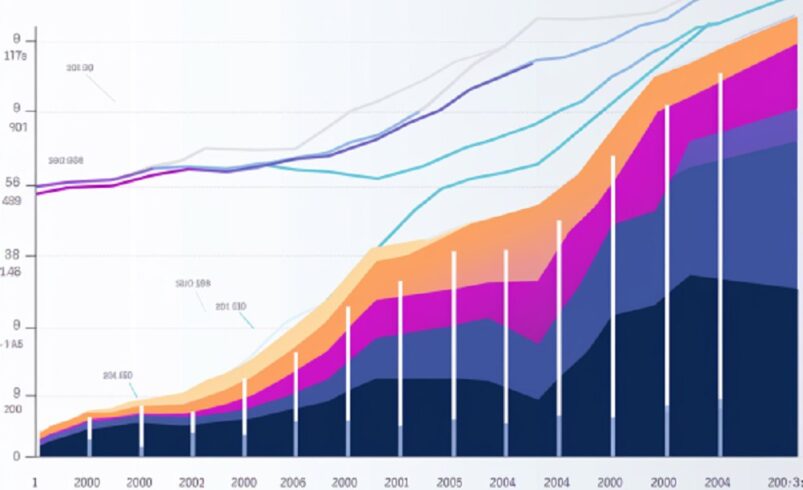51% Attacks: What Are They And What Should You Know?

Table of Contents
Blockchain technology faces a significant threat called a 51% attack. Projects like Verge, Bitcoin SV, and Ethereum Classic have experienced this attack in recent years. This harmful act of controlling over 50% of a blockchain network’s mining power disrupts decentralized systems.
This comprehensive guide explains the details about 51% attacks, including preventive measures against the attack.
Understanding 51% Attack
This attack happens when a group have authority over 51% of a protocol’s mining power and can alter how the blockchain operates. Thus, these malicious actors enable harmful actions like blocking new transactions, varying the order of transactions, and carrying out double-spending attacks.
Understanding Decentralization
Decentralization is the core of blockchain technology as it ensures that no single individual or group has ultimate authority over the network. In a decentralized blockchain, many nodes validate and confirm transactions. However, using this consensus mechanism, the network remains secure and prevents any entity from altering the ledger.
The Impact Of A 51% Attack
One of the critical impacts of a 51% attack is the ability to prevent new transactions from being confirmed. With control over most of the network’s hashing power, attackers can selectively delay or halt the confirmation of transactions.
This manipulation creates chaos within the network, disrupting the normal flow of transactions and potentially causing delays or denials in processing legitimate transactions.
Transaction Reordering
Beyond stalling confirmations, attackers can reorder the sequence of transactions within the blockchain. Thus, they can modify the order in which transactions are recorded, leading to confusion and inconsistency within the ledger.
This alteration of the transaction sequence could enable attackers to benefit unfairly or disrupt the network’s integrity.
Double-Spending Vulnerability
A severe consequence of a successful 51% attack is the potential for double-spending. This exploit allows attackers to spend the same cryptocurrency multiple times by reversing their transactions.
By manipulating the blockchain’s history and introducing conflicting transaction records, attackers can deceive the network into accepting transactions that had previously been deemed invalid.
Undermining Trust And Confidence
The occurrence of a 51% attack severely undermines the trust and confidence of participants within the blockchain network. Users, investors, and stakeholders may lose faith in the network’s security and reliability, leading to a decline in user adoption and a negative impact on the cryptocurrency’s value.
Economic And Financial Ramifications
Beyond the immediate disruption within the blockchain ecosystem, a successful 51% attack can have profound economic repercussions. It can cause financial losses for affected users, exchanges, and businesses relying on the blockchain for transactions.
Furthermore, confidence in the cryptocurrency associated with the attacked blockchain may plummet, impacting its market value and overall stability.
Challenges Faced By 51% Attackers
The challenges faced by attackers attempting a 51% attack on a blockchain network are substantial and multifaceted. These hurdles make executing such attacks increasingly difficult.
Costs Outweigh Benefits
Acquiring the computational power to control over 50% of a blockchain’s hashrate is a massive financial undertaking. As blockchain networks grow, the computational resources required for a successful attack increase exponentially.
The cost of renting or owning the immense computing power needed can be prohibitively expensive, deterring potential attackers.
Network Size And Complexity
As a blockchain network expands with additional nodes and participants, the difficulty of overpowering the network grows significantly. The larger and more diversified the network, the more challenging it becomes to gain majority control.
Altering multiple blocks in a widely distributed network requires extensive computational resources and time.
Consensus Mechanisms
Blockchain networks employ robust consensus mechanisms that require agreement among network participants for any changes to occur on the ledger. More importantly, achieving consensus on a decentralized network is challenging, especially when attempting to alter the ledger’s transaction history.
Such attempts would be met with resistance from the honest nodes in the network.
Final Thoughts
Although the potential for a 51% attack persists, especially on leading blockchain networks, the financial investment and technical challenges make it an improbable scenario. The risks and costs of attempting such an attack outweigh the potential gains. Thus, the potential attackers might be less interested in carrying out the act.
Time Crypto Market offers content visibility for dozens of crypto enterprises, and you can be a part of our network! Reach out to us on our telegram chat for inquiries. The nature of cryptocurrencies is highly unpredictable; always perform your due diligence before any investment. Several articles on our site come from guest contributors or are commissioned pieces, not originating from Time Crypto Market's in-house writers. The perspectives shared in these articles might not necessarily align with those of Time Crypto Market. We do not assume responsibility for the veracity, caliber, promotions, offerings, or any other elements presented on our platform. Consult our comprehensive terms of service and disclaimer for more details.








